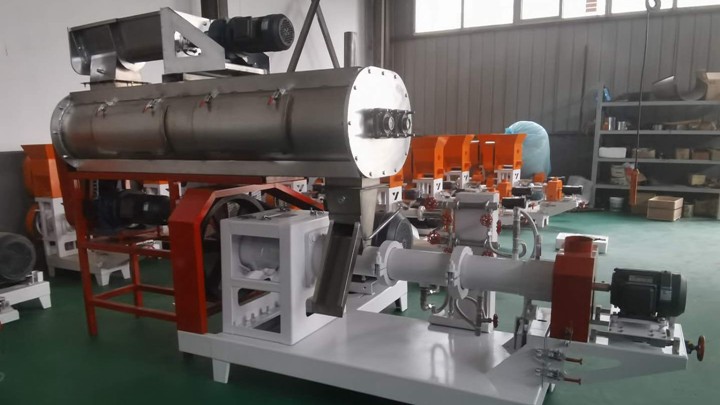.jpg)
2021-8-1·The cost of fish feed is a significant constraint to freshwater fish farming in Asia. In the aquaculture value chain, feed is a responsible factor and accounts for nearly 75% of the total cost of ...
.jpg)
2021-3-24·Aquaculture is more diverse today, with 40% more fish, shellfish, aquatic plant, and algal species cultivated in a wide variety of marine, brackish, and freshwater systems globally 10.Global ...
.jpg)
2022-1-13·Fish meal is the primary protein source in fish feed for many reasons, such as high protein content, rich amino acid profile, and better nutrient digestibility. ... world farmed fish production ...
.jpg)
2023-2-10·The system model comprised of a plant grow bed filled with sand measuring 30 cm in depth, a fish water tank containing tilapia fish (Oreochromis niloticus) stocked at the size of fingerlings stage ...
.jpg)
2023-2-10·The actual feed factors from the tests are used in calculations of FIFO. In feeds 1, 3, 4 and 5, raw materials from wild fish is replaced with vegetable oils and/or plant material* 1: RAFOA, feed factor = 1.3. 2A and 3: AquaMAX, feed factor = 0.9. 4 and 5: Whole chain, estimated feed factor = 1.2. The figures on which the FIFO calculations in ...
.jpg)
2022-3-3·“For calcium, iron, selenium and zinc, 1-28% is retained in farmed salmon. Scottish salmon is often marketed as high in omega-3 fatty acids (EPA and DHA), yet omega-3 concentrations are similar ...
.jpg)
2022-3-1·Author summary In this paper we demonstrate that marine-fed farmed salmon is an inefficient way to produce nutritious seafood, and that directing wild-caught ‘feed’ fish towards human consumption could maximise nutrient production while also relieving pressure on fisheries stocks. Substantial growth in aquaculture is required to …
.jpg)
Microbial communities in recirculating aquaculture systems (RAS) play a role in system success, nutrient cycling, and water quality. Considering the increasing socio-economic role of fish farming, e.g., regarding food security, an in-depth understanding of aquaculture microbial communities is also relevant from a management perspective, especially …
.jpg)
2023-2-13·The effect of the rigor stage (pre or post) and previous high-pressure processing (HPP; 450 and 550 MPa for 3 min) was checked during the storage on ice of farmed palm ruff (Seriolella violacea). Fish processed in pre-rigor conditions led to higher and lower levels (p < 0.05) of moisture and lipid contents in chilled fish, respectively, …
.jpg)
16 小时之前·Plenty of fish in the sea: a salmon farm in Canada. Credit: Michele and Tom Grimm/Alamy. Industrial chicken and salmon farms are found around the world, but nearly all of the environmental burden ...
.jpg)
2023-2-14·This study evaluated the effects of fish farm wastewater from the production of hybrid sturgeon (Acipenser gueldenstaedtii Brandt × Acipenser baeri Brandt) on the growth and quality parameters of romaine lettuce (Lactuca sativa var. longifolium cv. “Elizium”). The tested combinations were fish farm wastewater, fish farm wastewater …

2023-2-7·Stock the pond: Once your pond is prepared, you can start stocking it with fingerlings (young carp). It is important to stock at a rate that will allow the fish to have enough food and space to grow properly. Feed the fish: You will need to supplement the natural food sources in your pond with commercial carp feed.
.jpg)
2022-1-13·Fish meal is the primary protein source in fish feed for many reasons, such as high protein content, rich amino acid profile, and better nutrient digestibility. ... world farmed fish production ...

2019-4-24·Currently, shrimp feeds are 20-30% fishmeal, depending on the shrimp species being farmed—what would the environmental impact be if those percentages dropped? Malcorps et al. 2019 built a computer model to assess the changes in land, freshwater, and fertilizer use caused by substituting a portion of fishmeal shrimp feed …
.jpg)
2023-2-10·The system model comprised of a plant grow bed filled with sand measuring 30 cm in depth, a fish water tank containing tilapia fish (Oreochromis niloticus) stocked at the size of fingerlings stage ...
.jpeg)
2023-2-10·The actual feed factors from the tests are used in calculations of FIFO. In feeds 1, 3, 4 and 5, raw materials from wild fish is replaced with vegetable oils and/or plant material* 1: RAFOA, feed factor = 1.3. 2A and 3: AquaMAX, feed factor = 0.9. 4 and 5: Whole chain, estimated feed factor = 1.2. The figures on which the FIFO calculations in ...
.jpg)
Microbial communities in recirculating aquaculture systems (RAS) play a role in system success, nutrient cycling, and water quality. Considering the increasing socio-economic role of fish farming, e.g., regarding food security, an in-depth understanding of aquaculture microbial communities is also relevant from a management perspective, especially …
.jpg)
16 小时之前·Plenty of fish in the sea: a salmon farm in Canada. Credit: Michele and Tom Grimm/Alamy. Industrial chicken and salmon farms are found around the world, but nearly all of the environmental burden ...

2023-2-14·This study evaluated the effects of fish farm wastewater from the production of hybrid sturgeon (Acipenser gueldenstaedtii Brandt × Acipenser baeri Brandt) on the growth and quality parameters of romaine lettuce (Lactuca sativa var. longifolium cv. “Elizium”). The tested combinations were fish farm wastewater, fish farm wastewater …
.jpg)
Land-sea feed interdependencies result in substantial CPI overlap for chicken and salmon (85.5% of cells with chicken or salmon CPI > 0, Figure 1C). Overlap is greatest in areas where both chicken and salmon CPI are at low (0–45th quantile) or medium levels (45–90th quantile) (43.7% of overlapping cells, Figure 2).The production of raw materials for feed …
.jpg)
2023-2-7·Stock the pond: Once your pond is prepared, you can start stocking it with fingerlings (young carp). It is important to stock at a rate that will allow the fish to have enough food and space to grow properly. Feed the fish: You will need to supplement the natural food sources in your pond with commercial carp feed.